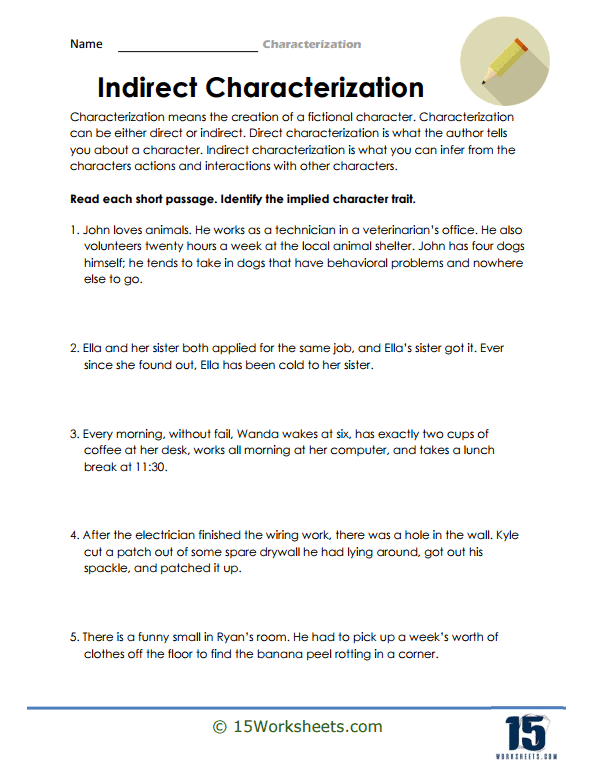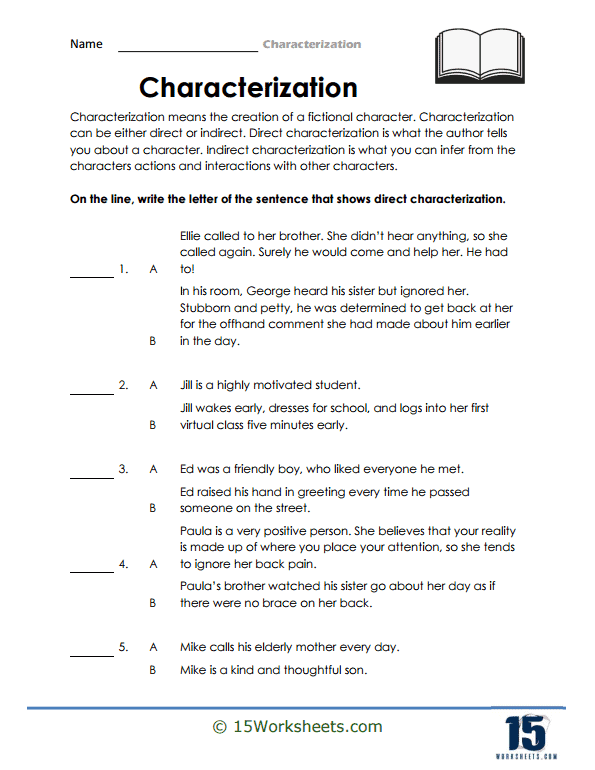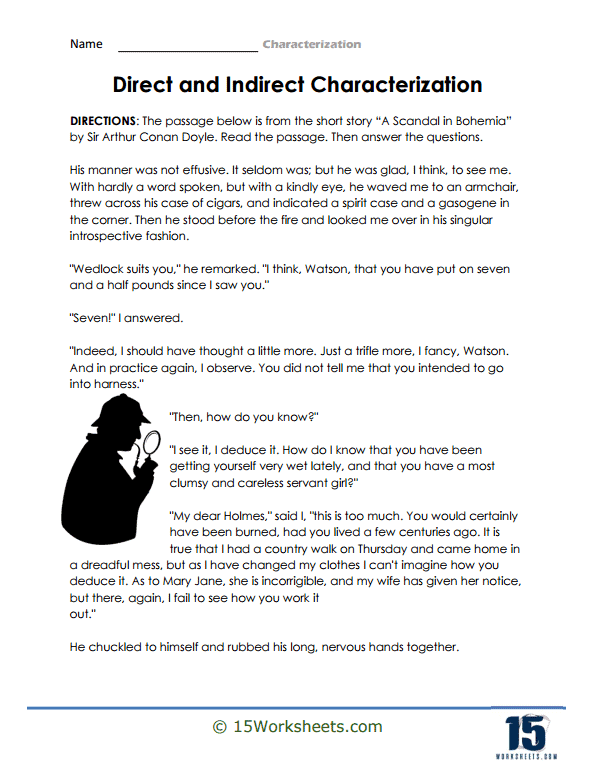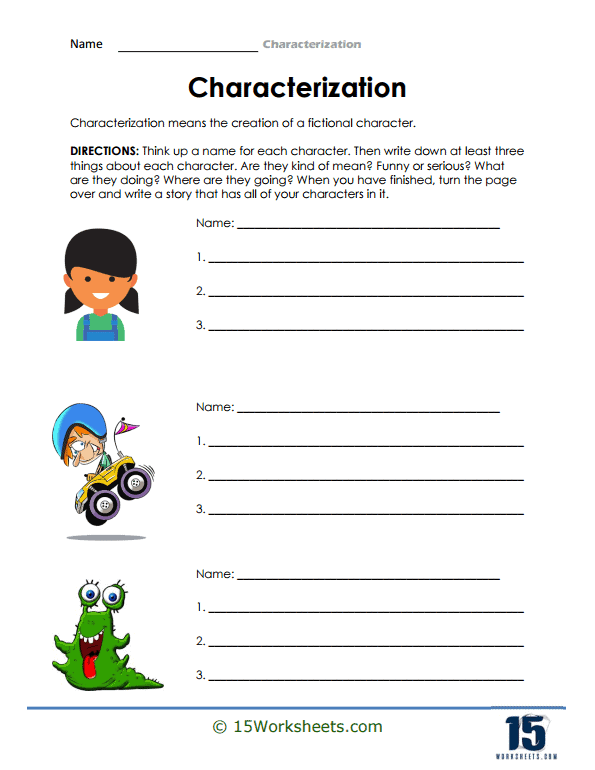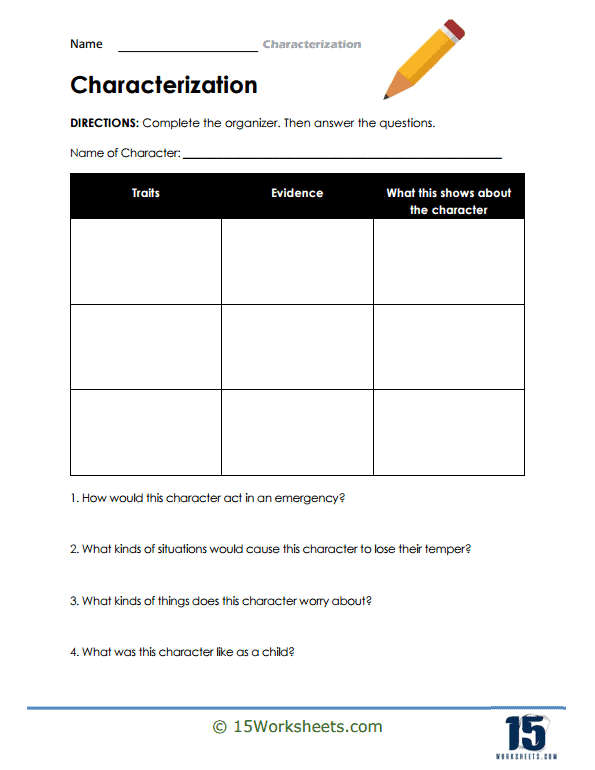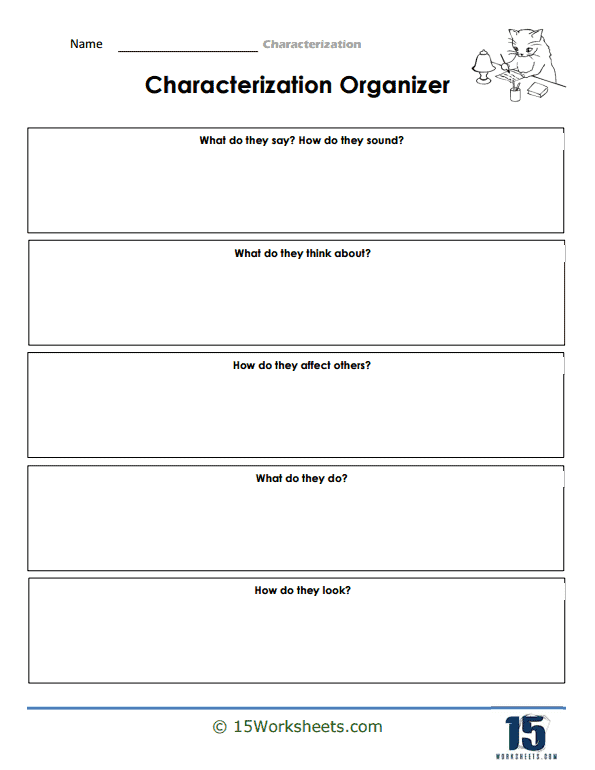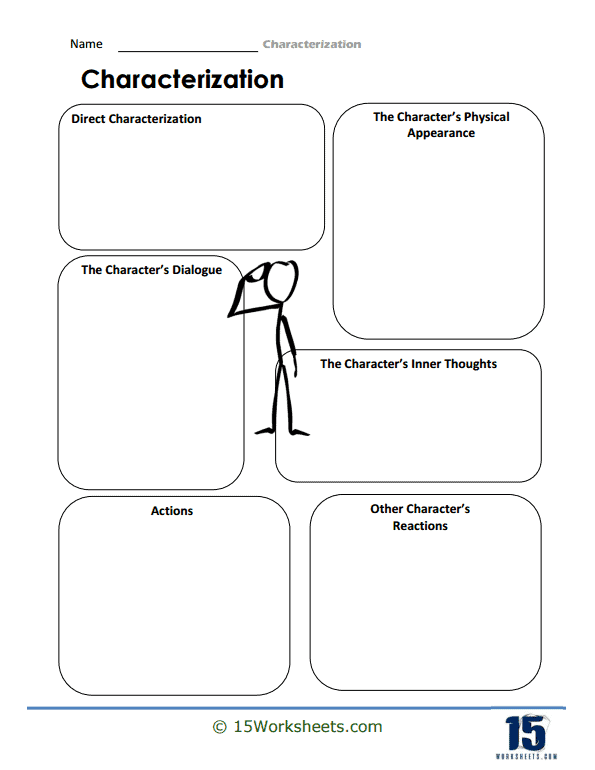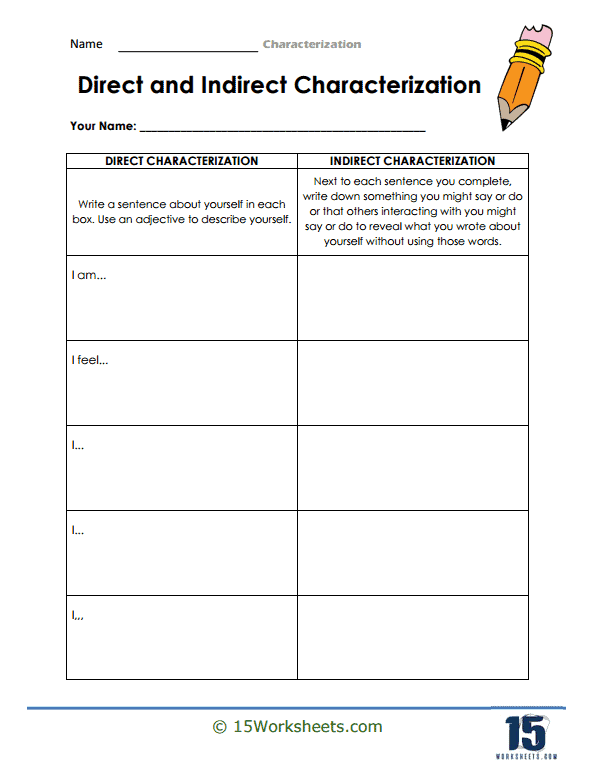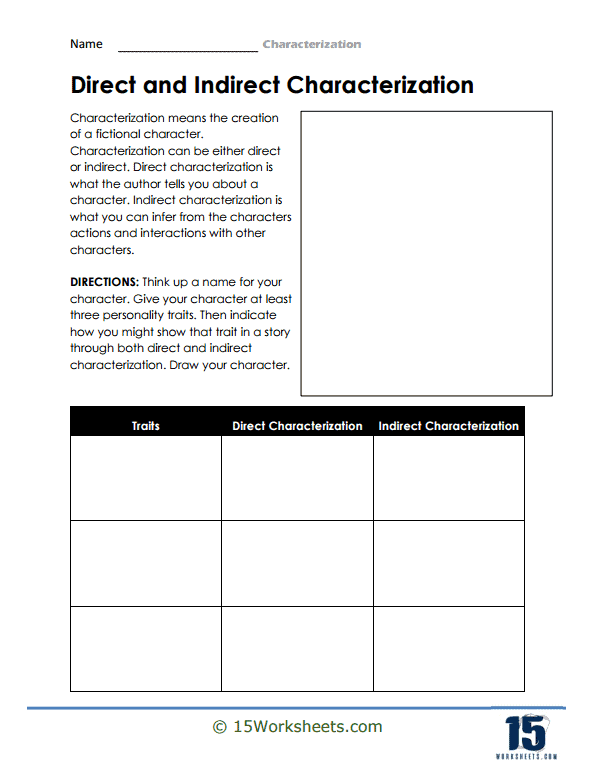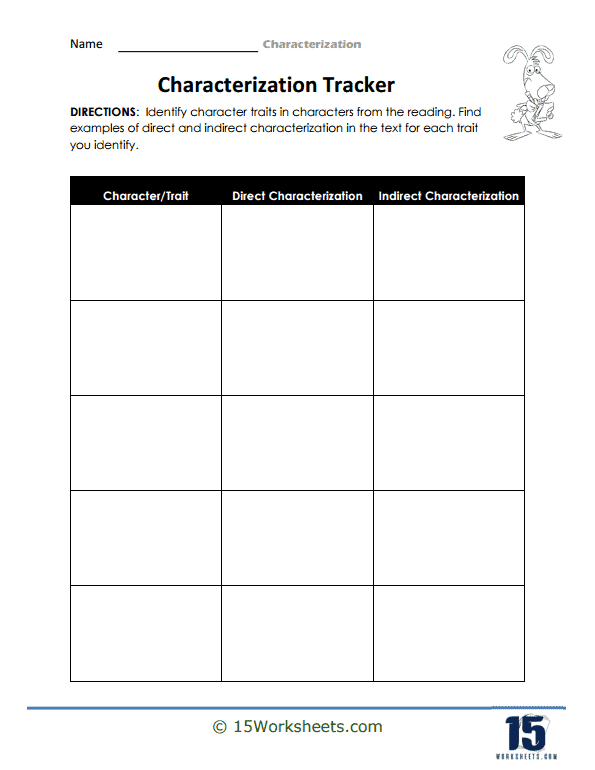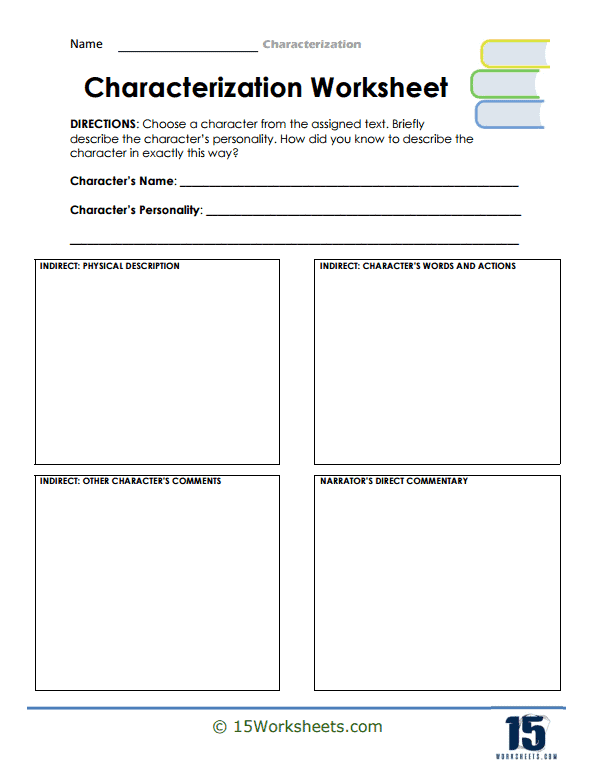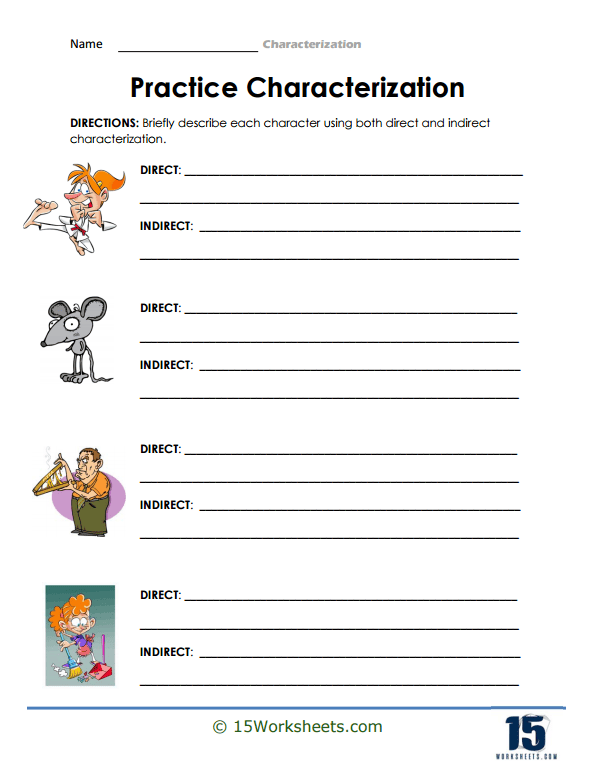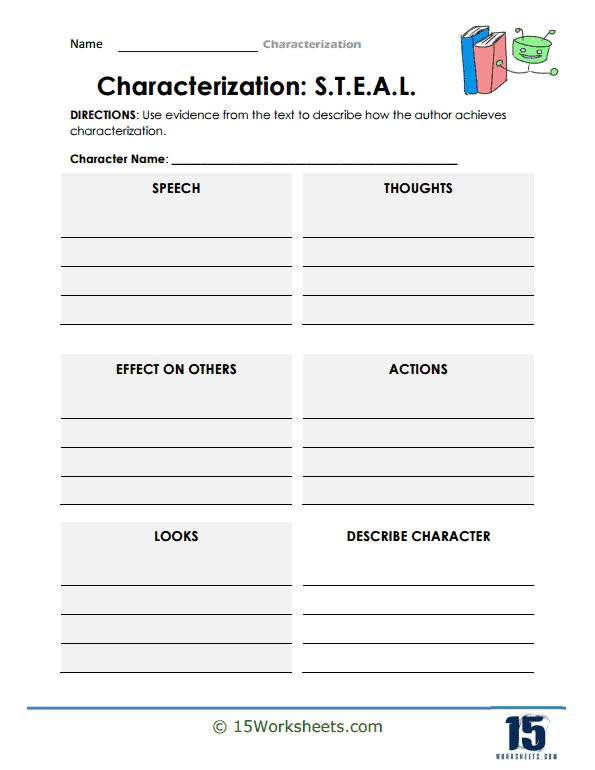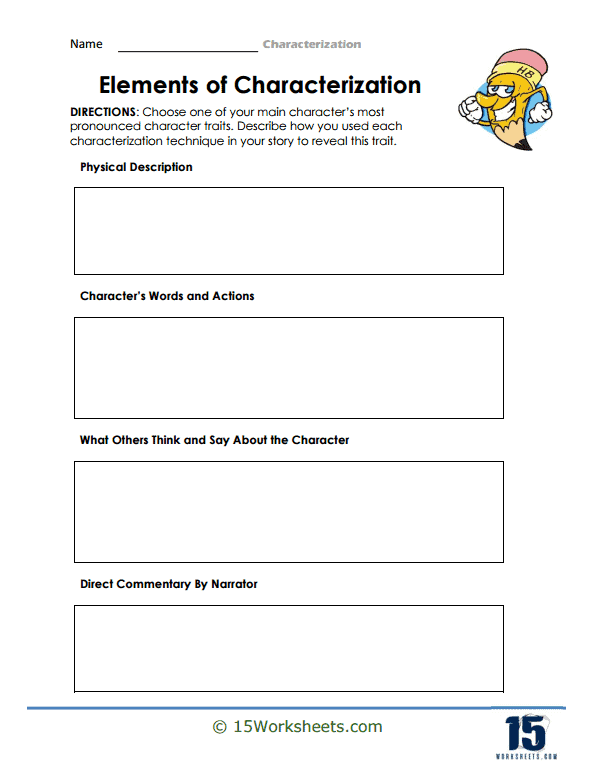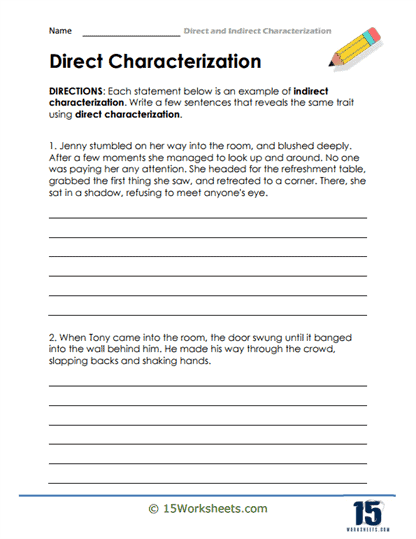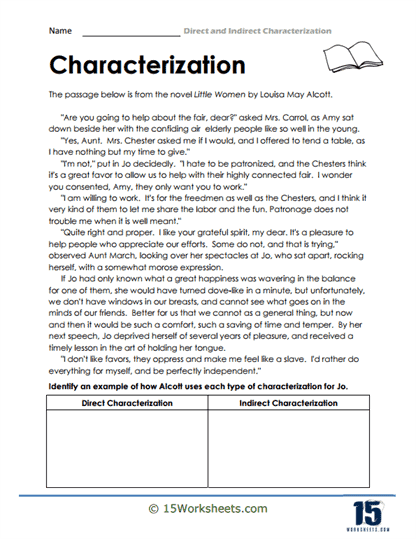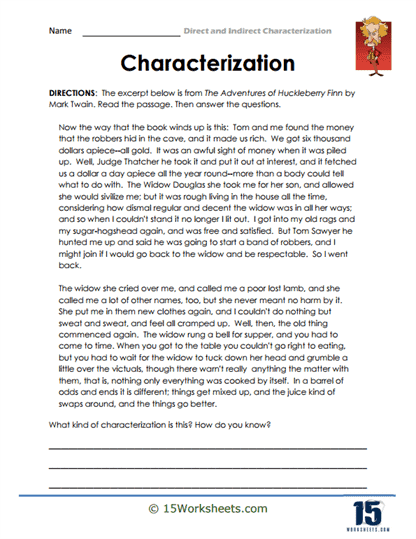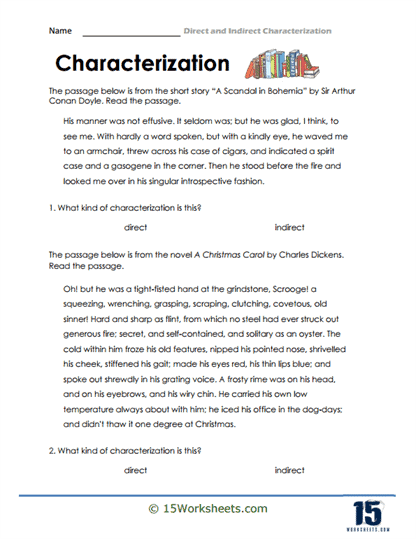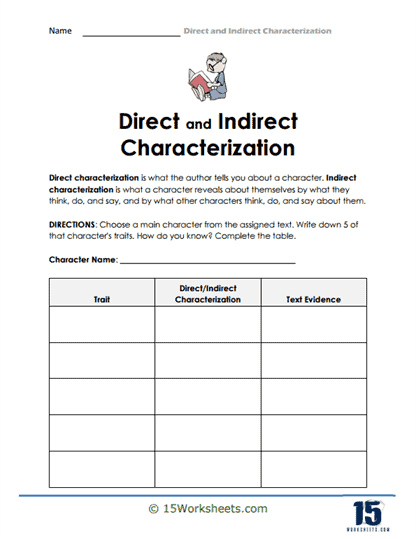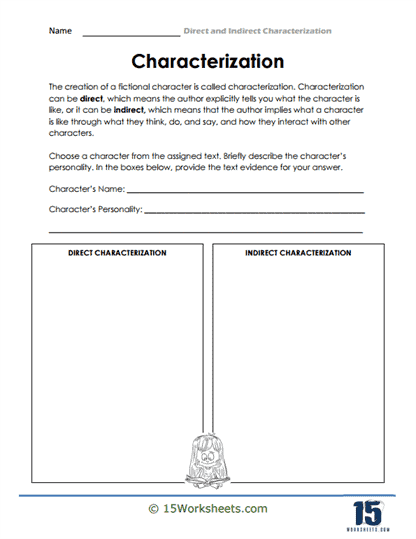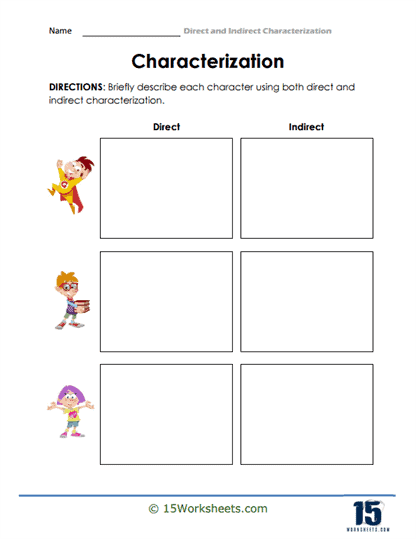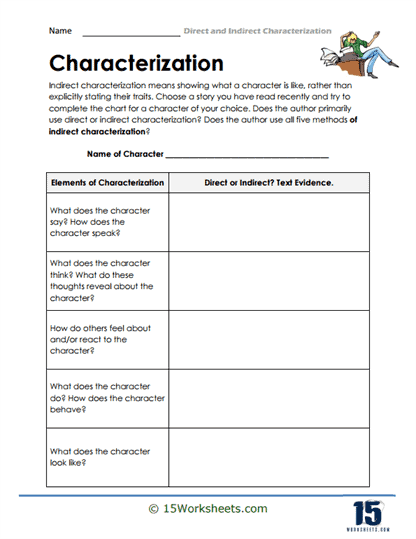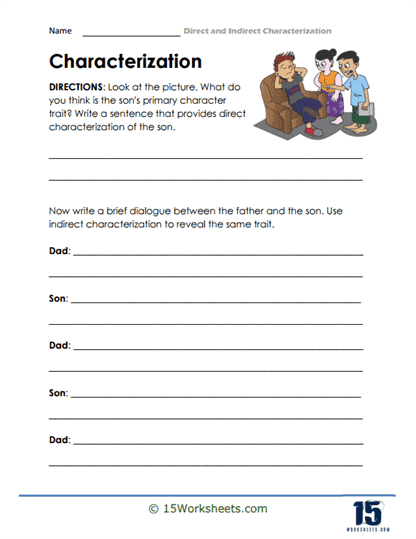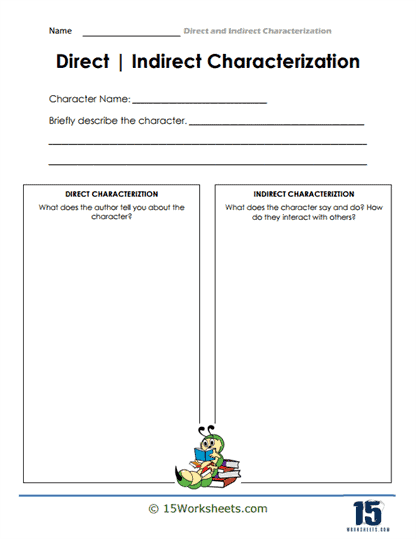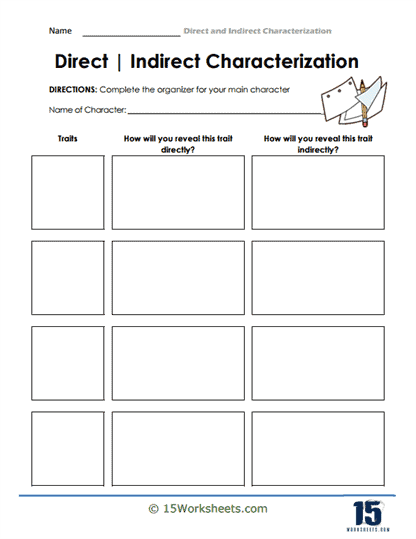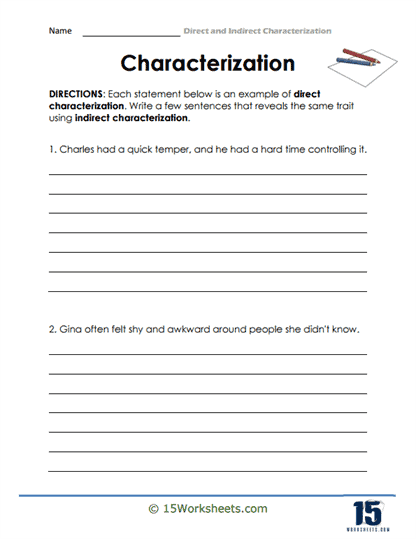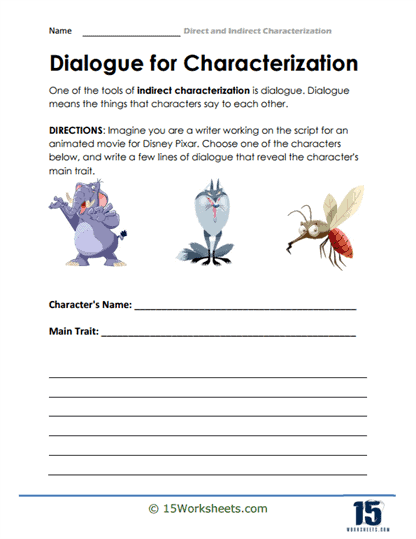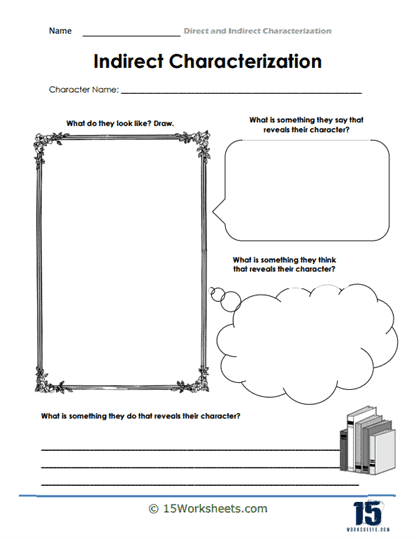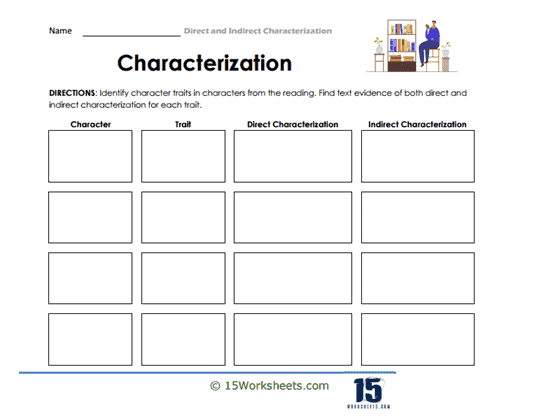Direct and Indirect Characterization Worksheets
All About These Worksheets
You know how in your favorite books, you get to know the characters really well, like they’re your friends? You understand what they’re like – their personalities, their looks, their habits, even what they might do in certain situations. That’s all thanks to a magical tool called “characterization” that writers use to bring their characters to life. There are two main types of characterization: direct and indirect. But how can you learn to use these tools yourself? That’s where Direct and Indirect Characterization Worksheets come in!
These worksheets are like a special set of paints and brushes that help you color your characters, making them vibrant, realistic, and relatable. They contain a variety of fun and engaging exercises that teach you how to use direct and indirect characterization in your own stories.
Now, let’s talk about what direct and indirect characterization actually mean.
Direct characterization is when the author directly tells the reader what a character is like. It’s like a straightforward introduction. For example, “Sarah is a kind-hearted and generous person.”
Indirect characterization, on the other hand, is a bit like a detective game. Instead of telling us straight out, the author shows us clues about the character through their actions, words, thoughts, feelings, and interactions with other characters. We then piece these clues together to understand the character. For instance, “Sarah spent her weekends volunteering at the local animal shelter, always putting others before herself.”
Now, let’s see what kind of activities you might find in these worksheets.
One common exercise could be identifying examples of direct and indirect characterization in a passage. You might read a short paragraph or dialogue, and then be asked to spot and label the different types of characterization.
Another activity might involve practicing your own characterization skills. You could be given a character and a situation, and then asked to write a scene using both direct and indirect characterization.
Some worksheets might even have you turn direct characterization into indirect characterization and vice versa. For example, you might start with direct characterization like “John is very brave,” and then rewrite it as indirect characterization, such as “Despite the howling wind and driving rain, John charged into the storm, determined to rescue the stranded puppy.”
Through these activities, you’ll learn how to create believable characters that readers can connect with. You’ll understand when to show and when to tell, how to reveal a character’s personality through their actions and dialogue, and how to make your characters truly come alive on the page.
So, in a nutshell, Direct and Indirect Characterization Worksheets are like your personal coaches, guiding you in the art of character creation. By practicing with these worksheets, you’ll become a pro at painting vivid, detailed pictures of your characters, bringing your stories to life in the most exciting way. So, grab your pencil, unleash your imagination, and get ready for an amazing storytelling adventure!
Let’s Explore This Deeper
Characterization is the process by which an author develops and presents characters in a story or narrative. It involves creating and conveying information about a character’s personality, appearance, background, beliefs, motivations, and relationships with other characters. Characterization helps readers understand and connect with the characters, making them more engaging and relatable.
Direct and indirect characterization are two techniques used by writers to develop and convey information about characters in a story or narrative.
Direct characterization is when the author explicitly tells the reader about a character’s traits, personality, or background. This can be done through the narrator’s voice, dialogue, or by the character themselves. For example, the author might write, “Sarah was a kind and generous person, always helping others in need.”
Indirect characterization, on the other hand, is when the author provides clues about a character’s traits or personality through their actions, speech, thoughts, and interactions with other characters, leaving the reader to infer or deduce the character’s qualities. For example, the author might show Sarah’s kindness by describing a scene in which she helps an elderly neighbor carry groceries up the stairs or listens patiently to a friend’s problems.
In summary, direct characterization provides explicit information about a character, while indirect characterization allows the reader to infer a character’s traits through their actions, thoughts, and interactions. Both techniques can be used effectively in storytelling, depending on the author’s desired effect and the needs of the narrative.

